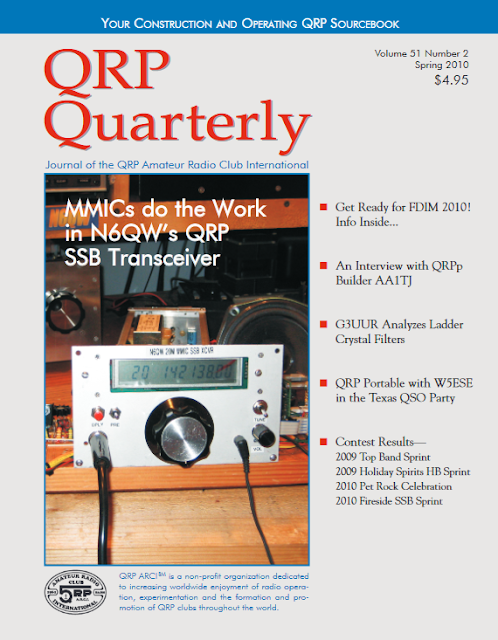One of my cherished boat anchors!
Since 1967 I have owned about eight SWAN SW-120's and this one I acquired about 14 years ago. For those who don't know, the very first offerings from Swan Engineering were three mono-band transceivers covering the 80, 40 and 20M Bands.
This particular unit appears different from many of the single band Swan units and that is because while not in the 1st group of 10 produced (Gold Face) it was in the early builds and built in Benson, AZ. The Swan Net has a keeper of the S/N's, and I was told this one was built in June of 1961.
Noticeable is that later units had a Meter Face over the dial readout and this one has a very expensive Triplet meter. The later units had a less expensive meter and the dial cover and the meter front matched. The final is a 6DQ5 and typically you can get 100 watts on Tune. The Balanced Modulator is a RCA 7360.
[AD4DQ on his QRZ page has photos of his vintage gear. Sitting side by side is a photo of two Swan units with one that looks like mine and the other a later unit.]
The radio is operational and of note has a linear dial readout and it tunes from 14.2 to 14.235 MHz USB only. A true Transceiver it uses a unique system of biasing the tubes to cut-off when not being used. Certain tubes are biased OFF in transmit and others OFF in receive. A simple 4 Pole DT relay does it all.
The IF is 5.173MHz and the VFO is at 9 MHz. This topology was pure Genius as it would result in an instant two band rig with the 5 MHz Filter. The additive sum gives USB on 20M, and the subtractive mix inverts the sideband to give LSB on 80M. By shifting the VFO from 9MHz to 12MHz gives LSB on 40M. This is how it is done on the later SWAN SW-240.
The Audio Gain control is really the RF Gain Control. Owner mods include adding an AGC circuit and a padding cap to shift the frequency down to the CW bands. Kind of a Kludge!
Herb Johnson the founder of Swan Engineering, later Swan Radio, hand built most of the early production units and the silk screening is kind of crude. Much of the early builds were done in his garage in Benson.
Keep in mind this was Cycle 19, the hottest sunspot cycle to date for ham radio and the other big advantage was size. The home station might be a Hammarlund HQ180 and a Johnson Invader that combined weighed a ton and needed the whole desktop. The SW-120 was light weight and could fit under the dash of a then modern auto in the space between the dash and transmission hump. Yes, I had one mobile in a Chevy Vega.
This jewel cost in the $300 range and when a KWM-2 cost $1250 in 1961 -- the price point made it a winner. Shortly after moving his operations to Oceanside, the Swan 240 hit the market and it had all three bands in one box.
One very interesting design note (among many) is that the Transmitter Pi Network is in the receive chain so on receive if you peak up a signal with the plate and load controls --you are close to the values for transmit.
Just for fun I once checked into the 20M Collins Net with the Swan 120. What fun!
This SW-120 was in particularly good cosmetic and electrical shape and remains so today. Too bad it doesn't tune down to FT-8 as that would be a blast.
Thus, the SW-120 was indeed chasing a dream: DX operation in the car running 100 watts and a small size. Much later the ICOM IC-706 would be a similar dream chase with an even smaller size, no special power supply, multi-band and noise blanker.
Also in my favorite category are the KWM-1's I have. Herb Johnson went on to found Atlas Radio.
73's
Pete N6QW
PS About a year ago I bought a SWAN SW-175 (80M) for $50 and it works, and I had thoughts of converting it to 20M by adding an Arduino and Si5351 and put a color TFT in the dial face. As best as I can tell three or 4 coils plus caps would need changing. Currently on eBay is a SW-140 for $200. That is outside my $50 template.
















.jpg)
.webp)
.jpg)


.jpg)